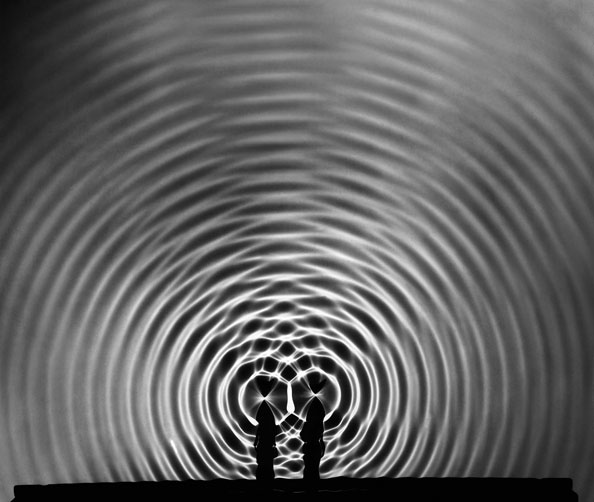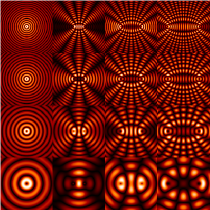In the System Design and Management programme I’m in, we think a lot about how to manage complex engineering projects. One of the biggest challenges is that these projects (think cars, spaceships) are larger than the mind can comprehend and it’s very difficult to get a sense of whether it’s going well or about to run into problems.
This idea aims to reflect some of that complexity in water ripples, hoping to show how different actions on the project are literally constructive or destructive. This body of water will have a few different features: Point sources, Frequency, and Gates.
The idea is to have a point source for every subgroup of a project team that’s working on a large system. For example, one point source can represent the thruster team for a spaceship, another the flight path planning team. Or for a car, one can represent the software team, and another the proximity sensor team. The sources can be positioned in many ways relative to one another, whether all starting on the same side of a rectangular pool, or different sides of a circular pool, or starting at different distances from the start end of rectangular pool (perhaps to make a literal swim lane diagram).
Each of these point sources can vary the frequency that they dip in to the water, corresponding to major milestones. For a software project, it can be as simple as every time there is a new commit on the project.
This is an example of the complex kind of patterns that can be produced by varying source location and frequency:
Finally, gates are barriers with slits that can be put further down from the point source, such as midway in a rectangular pool. These gates represent the same funding gates or deliverable deadlines that any project has structured into it. These slits serve to change the interference pattern.
More thought will have to be put into exactly what each dip should represent, and what the interference can really mean, and how patterns might be interpreted, but one can imagine that intuitive project feedback it could provide. Teams might also experiment with different locations and frequencies, to see how a project could be structured differently, in terms of timing of deliverables or division of teams.



